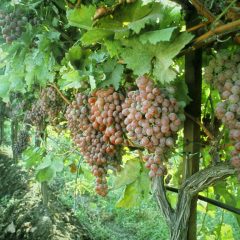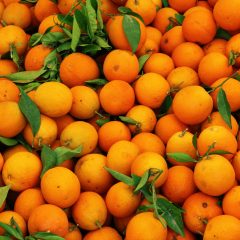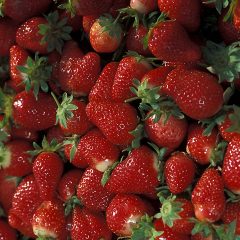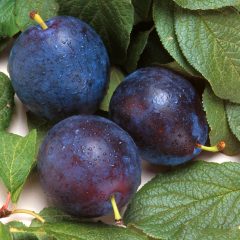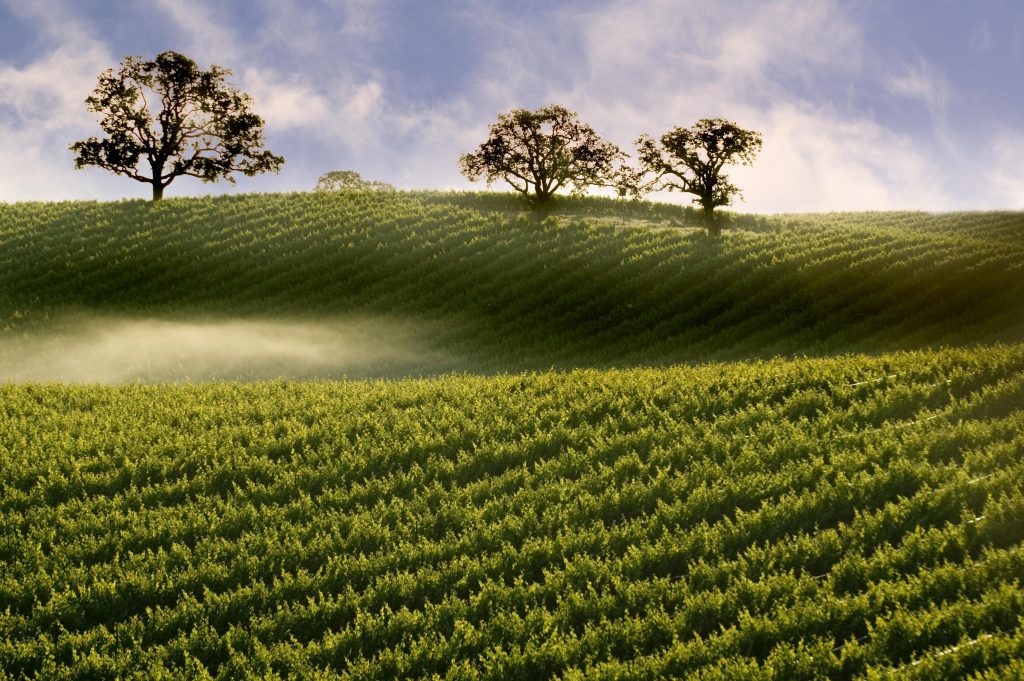Anthocyanins are naturally occurring polyphenols that cause the red to blue colors in fruit and vegetables. They are found in grape skins and red wines and have recently been shown to have potential antioxidant and other health benefits. Some studies have shown a difference in polyphenol concentrations of crops grown using organic or conventional practices; […]
Read More, References, Comment »
Many scientific teams in Europe are trying to develop reliable and affordable tests to differentiate between organic and conventional foods. For many crops, pesticide residue levels are considered the best way to make such a determination, but in the case of citrus, this approach is unreliable. In the Mediterranean region where most of Europe’s citrus […]
Read More, References, Comment »
One of the challenges facing wine growers is that grapes have high polyphenol oxidase (PPO) activity. This natural enzyme contributes to the rate of browning in the fruit after it is picked. Browning causes a change in color and flavor of the juice, and diminishes the quality of the final product. Thus, scientists have worked […]
Read More, References, Comment »
Recent evidence has suggested that moderate consumption of red wine results in a decreased risk of cardiovascular disease. This is attributed to the antioxidant effect of the polyphenolic compounds in red wines. The major antioxidant in red wines – resveratrol – is a stilbene shown to have anticancer effects. However, wines have also been shown […]
Read More, References, Comment »
A team of U.S. Department of Agriculture scientists stationed at the Western Regional Research Center in Albany, California studied the lycopene content of 13 commercially available brands of catsup – six major national brands, three organic brands, two store brands, and two brands sold in fast food restaurants and/or vending machines (Ishida and Chapman, 2004). […]
Read More, References, Comment »
For more than ten years, scientists at U.C. Davis in California have conducted a Long-Term Research on Agricultural Systems project (LTRAS). The impacts of conventional and organic management on tomato production and tomato nutrient concentrations have been a major focus of this effort. On June 23, 2007, the American Chemical Society’s Journal of Food and […]
Read More, References, Comment »
Oxidative damage to human brain cells is an inevitable part of getting older. This is because the body’s natural antioxidant defense mechanisms become steadily less efficient as we age. For this reason, the consumption of foods high in antioxidant content is increasingly important among the elderly, see Antioxidants for more information. Scientists at Cornell University […]
Read More, References, Comment »
A recent study compared crops of highbush blueberries grown on five organic and five conventional farms in New Jersey (Wang et al., 2008). The farms shared comparable soils and weather conditions, and the berries were harvested in precisely the same way. The researchers measured nutritional quality characteristics including fruit sensory quality, total antioxidant activity, and […]
Read More, References, Comment »
EMBARGOED UNTIL: 00:01Hrs Tuesday 15th July 2014 – set by the academic journal British Journal of Nutrition Source Information: “Higher antioxidant concentrations and less cadmium and pesticide residues in organically-grown crops: a systematic literature review and meta-analyses.” Baranski, M. et al. British Journal of Nutrition, July 15th 2015. New study finds significant differences between organic […]
Read More, References, Comment »
In 2005, the USDA issued a remarkable report called “What We Eat in America, NHANES 2001-2002” (also available here for 2005-2006). It contains tables for some two-dozen essential nutrients (Vitamin A, C, and other vitamins; zinc, iron and other minerals) and components in food (e.g.. carbohydrates, protein). Each table reports mean nutrient intakes in different portions […]
Read More, References, Comment »

